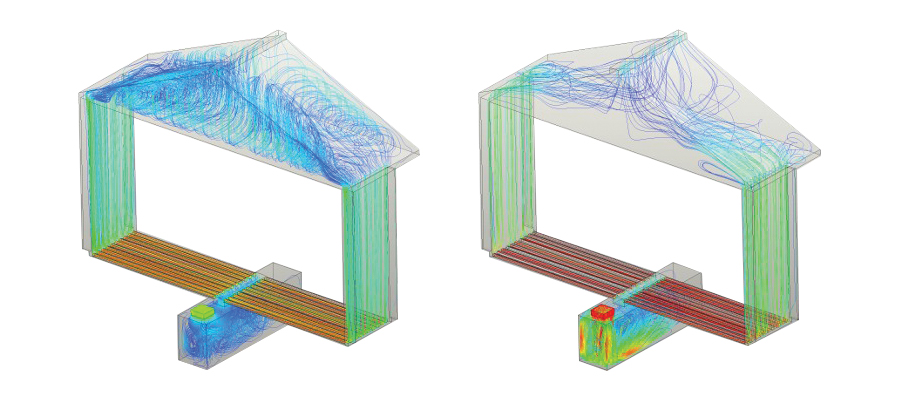Rising energy prices, environmental consciousness, and the associated demand for energy efficiency are key considerations in the design of single and multi-family houses, in an attempt to reduce the ecological footprint. One of the trends for increased efficiency in housing is passive houses, which don’t require classical building heating due to their excellent thermal insulation. These houses, however, require a complex ventilation system which often causes criticism as it doesn’t allow a natural fresh air supply.
In Europe, there are 25,000 certified passive structures (from schools and commercial buildings to homes and apartment buildings)—whereas only 13 have been built in the United States so far. The leaders in passive housing are the German-speaking countries and Scandinavia. [1]
Based in Klagenfurt, Austria, IBEEE is a holistic development and engineering service provider for electronic systems and energy concepts for buildings. The team, led by Dr. Alexander Lechner, covers a broad service and industry spectrum, focusing on renewable energy.

Passive Ventilation
Passive ventilation is a natural ventilation system that makes use of natural forces, such as wind and thermal buoyancy, to circulate air around an indoor space. These ventilation systems work to regulate the internal air temperature, as well as bring fresh air in and expel stale air. This is largely achieved through the opening and closing of windows and vents, which act as a source of air as well as an exhaust.
IBEEE’s engineers wanted to investigate and quantify the performance of a fanless ventilation system used in their passive house design. For this purpose, they chose the SimScale simulation platform to perform two CFD simulations for identical designs; one with the active ventilation system and the other with the passive one.
A new approach in passive ventilation uses dual outer walls that guarantee fresh air supply and heat distribution across all the rooms in a house. Through skillful planning, the air hull surrounding the building can be used to control temperature and air distribution without the installation of ventilators, based only on the stack effect. Convective flow effects can help to achieve both cooling in summer and heating in winter.
CFD Analysis Comparing Active and Passive Ventilation
For the CFD analysis, the CAD model of the ventilation system was uploaded and meshed on the platform. Within minutes, a high-quality mesh was automatically generated.
With the support of the SimScale team, a working simulation of the complex system was set up. The comparative analysis of the passive system could be derived within a few minutes from the existing simulation. HVAC simulation, which is part of SimScale’s CFD simulation offering, was used to perform this analysis.
Due to the availability of on-demand high-performance computing power on the SimScale platform (up to 32 cores), the engineers from IBEEE were able to complete the simulation, which was ready for direct evaluation in the web browser.
The physical quantities within the flow field, i.e., temperature, pressure, and velocity, were visualized as desired with cuts and streamlines and subsequently saved as image files. Ultimately, an automatic project document was created.
Results
The simulation revealed that the fan could not only be replaced by the stack effect but that this was actually more powerful than the active ventilation. The flow rate of 205 m3/h for the passive ventilation is almost 40% larger than that of the active solution. The reason is the mixing of the air at the entrance. This leads to a homogenization of the temperature and reduces the buoyancy effects.
For IBEEE, the overall cost of this simulation project was 50 € and the working time was only two hours.
Want to learn more about this topic? This article might interest you: What is the Difference Between Active and Passive Cooling?
Download this case study for free to learn how the SimScale CFD platform was used to investigate a ducting system and optimize its performance.
References
- The New York Times, No Furnaces but Heat Aplenty in Passive Houses



